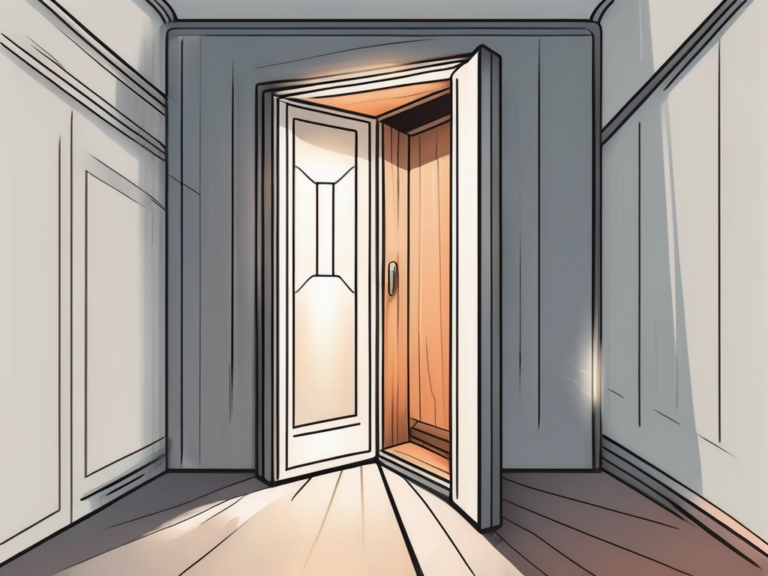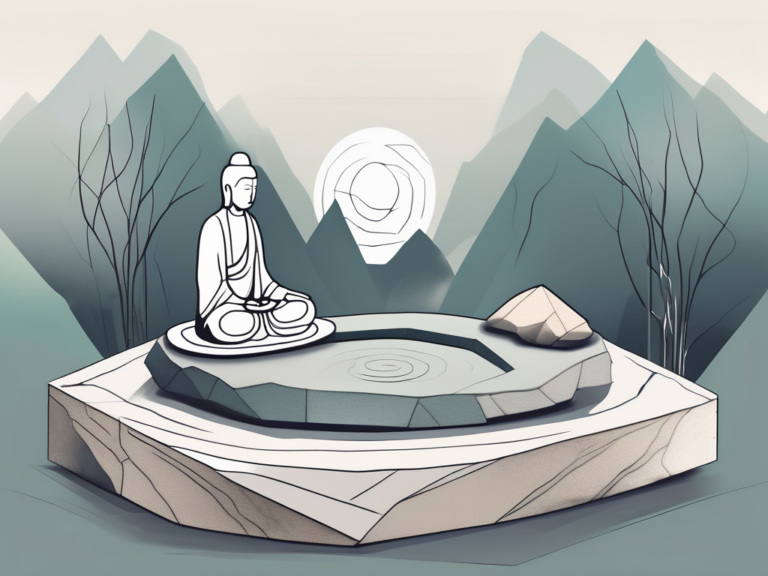Discover the Beauty of Vibrant Oils: Unleash Your Inner Artist
Are you ready to embark on a journey of creativity and self-expression? If so, oil painting might just be the perfect medium for you. With its rich colors, unique textures, and endless possibilities, oil painting allows you to unleash your inner artist and create captivating works of art. In this article, we will explore the basics of oil painting, master essential techniques, delve into the vibrancy of oils, share tips for nurturing your artistic spirit, and provide guidance on preserving your treasured creations.
Understanding the Basics of Oil Painting
Before diving into the world of oil painting, it’s crucial to understand its history and evolution. For centuries, artists have used oils to create stunning masterpieces that have stood the test of time. From the early Renaissance period to the modern art movement, oil painting has gone through an incredible journey of development and refinement.
One fascinating aspect of oil painting is its versatility. Unlike other mediums, such as watercolor or acrylic, oil paints have a slow drying time, allowing artists to work with the paint for extended periods. This characteristic gives artists the freedom to blend colors, create texture, and make adjustments to their compositions over time. The ability to build layers and achieve intricate details is what sets oil painting apart from other forms of art.
To get started with oil painting, it is essential to have the right tools. Brushes, palette knives, paints, and a suitable surface, such as canvas or wood, are a few of the necessary supplies. Investing in quality materials will enhance your painting experience and allow you to achieve professional-looking results.
When it comes to brushes, there are various types to choose from, each serving a specific purpose. From flat brushes for broad strokes to round brushes for fine details, having a well-rounded collection will give you more flexibility in your artwork. Palette knives, on the other hand, are excellent for creating texture and adding dimension to your paintings.
Additionally, learning color theory is crucial in oil painting. Understanding how colors interact and complement each other will help you create harmonious and visually captivating compositions. Experimenting with different color palettes and exploring the emotional impact of different hues will take your paintings to new heights.
One technique that oil painters often employ is the concept of underpainting. This involves creating a monochromatic base layer before adding color. Underpainting allows artists to establish values and create a solid foundation for their paintings. It also adds depth and richness to the final artwork, as the layers of color interact with the underlying tones.
Another aspect to consider is the drying time of oil paints. While the slow drying time can be advantageous, it also requires patience and planning. Artists often work on multiple paintings simultaneously, allowing each layer to dry before adding the next. This method ensures that the paint doesn’t become muddy and allows for more control over the final result.
As you embark on your oil painting journey, don’t be afraid to experiment and explore different techniques. The beauty of this medium lies in its endless possibilities and the ability to create unique and personal works of art. Whether you’re a beginner or an experienced artist, oil painting offers a world of creativity waiting to be explored.
Techniques to Master in Oil Painting
Brushwork techniques are fundamental to oil painting. By varying brushstrokes, you can create different textures and effects that bring your artwork to life. Whether you prefer crisp, detailed strokes or loose, expressive brushwork, the possibilities are endless.
One brushwork technique that can add a touch of elegance and sophistication to your oil paintings is known as “sgraffito.” This technique involves gently scratching or scraping the top layer of paint to reveal the layers beneath, creating intricate patterns or adding subtle details. Sgraffito can be used to create a sense of movement or to highlight specific areas of your artwork, adding depth and visual interest.
Another technique to explore is glazing and scumbling. Glazing involves applying translucent layers of paint on top of each other, creating a beautiful depth and richness to your artwork. It allows you to build up colors gradually, creating a luminous effect that is difficult to achieve with direct brushstrokes alone. Scumbling, on the other hand, involves lightly applying opaque paint over a dry layer, creating a soft, textured effect. This technique is particularly useful for creating atmospheric effects or adding a sense of mystery to your paintings.
Impasto and alla prima are two additional techniques to experiment with. Impasto involves applying thick, textured paint directly onto the canvas, adding depth and tactile interest to your artwork. It allows you to create three-dimensional effects, making certain elements of your painting stand out. Alla prima, also known as “wet-on-wet,” involves completing a painting in a single sitting, capturing the immediacy and spontaneity of the subject. This technique requires a certain level of confidence and decisiveness, as there is no room for hesitation or corrections. It can result in vibrant, energetic paintings that have a sense of freshness and vitality.
As you continue to explore these techniques, remember that practice is key. Each brushstroke, each layer of paint, is an opportunity to refine your skills and develop your own unique style. Don’t be afraid to experiment, to push the boundaries of what you thought was possible. The world of oil painting is vast and ever-evolving, and by mastering these techniques, you will be able to create artworks that truly captivate and inspire.
Exploring the Vibrancy of Oils
Light plays a crucial role in oil painting. Understanding how light interacts with objects and how it affects color perception allows you to create depth and realism in your artwork. Whether it’s capturing the warm glow of a sunset or the subtle reflections on a still life, mastering the interplay of light and shadow will take your paintings to a new level.
Adding depth and texture to your paintings is another way to bring vibrancy to your artwork. Experimenting with different brush techniques, layering paint, and incorporating various textures, such as using palette knives or adding mixed-media elements, will give your paintings a dynamic and captivating appeal.
Color is a powerful tool in evoking mood and atmosphere. Choosing the right color palette can convey emotions, whether it’s a serene, tranquil scene or a vibrant, energetic composition. Understanding color harmonies and learning how to effectively use color contrasts will enable you to create visually captivating and emotionally engaging artwork.
When it comes to capturing light in your oil paintings, it’s important to consider not only the direction of the light source but also the quality of light. The warm, golden hues of sunlight during the golden hour can create a magical and ethereal atmosphere in your paintings. On the other hand, the cool, diffused light of a cloudy day can lend a sense of tranquility and softness to your artwork.
Texture is another element that can greatly enhance the vibrancy of your oil paintings. Experimenting with different brush techniques can create a variety of textures, from smooth and blended to bold and impasto. Using palette knives can add a sense of energy and movement to your artwork, while incorporating mixed-media elements like collage or texture paste can bring a whole new dimension to your paintings.
When it comes to color, understanding color harmonies is essential. Complementary colors, such as blue and orange or red and green, can create a dynamic and visually striking contrast in your artwork. Analogous colors, which are adjacent on the color wheel, can create a harmonious and serene atmosphere. By exploring different color combinations and understanding their psychological effects, you can evoke specific emotions and create a powerful visual impact in your paintings.
Tips for Unleashing Your Inner Artist
As artists, we all experience creative blocks from time to time. Overcoming these hurdles is crucial to maintaining artistic growth. Exploring new subjects, trying different techniques, or simply taking a break to relax and recharge can help reignite your creativity and inspire you to create meaningful artwork.
Developing your unique artistic style is another important aspect of an artist’s journey. Experimenting with different approaches, studying the works of master artists, and finding inspiration in everyday life will help you develop a signature style that reflects your personality and vision.
Staying inspired and motivated can sometimes be challenging. Surrounding yourself with like-minded individuals, joining local art communities, and participating in exhibitions or art events will keep your creative fire burning. Never underestimate the power of connecting with fellow artists and sharing your artistic journey.
When it comes to exploring new subjects, the possibilities are endless. You can venture into the realm of abstract art, capturing emotions and ideas through shapes and colors. Or perhaps you can delve into the world of portraiture, capturing the essence of a person’s character and story through your brushstrokes. The key is to step out of your comfort zone and embrace the unknown, for it is in the unknown that true artistic growth lies.
Trying different techniques is like embarking on a thrilling adventure. You can experiment with various mediums such as oil paints, watercolors, or even mixed media. Each medium has its own unique characteristics and challenges, allowing you to explore different textures, depths, and effects. Don’t be afraid to get messy and let your creativity flow freely.
While taking a break may seem counterintuitive, it is actually a vital part of the creative process. Stepping away from your art for a while allows your mind to rest and rejuvenate. During this time, you can immerse yourself in other forms of art, such as visiting galleries, reading books, or watching movies. These experiences can spark new ideas and perspectives, breathing fresh life into your artistic endeavors.
As you embark on the journey of developing your unique artistic style, don’t be afraid to draw inspiration from the masters. Study the works of renowned artists who have left a lasting impact on the art world. Analyze their techniques, brushstrokes, and use of color. By understanding their artistic choices, you can incorporate elements into your own work while still maintaining your individuality.
Remember that inspiration can be found in the most unexpected places. Take a walk in nature and observe the play of light and shadow. Visit a bustling city and capture the energy and movement in your sketches. Look closely at everyday objects and discover the beauty in the mundane. By training your eyes to see the world through an artistic lens, you will find inspiration everywhere you go.
Lastly, connecting with fellow artists is a powerful way to fuel your creativity. Joining local art communities or online forums allows you to share ideas, receive feedback, and learn from others. Collaborating with other artists can lead to exciting projects and new perspectives. Together, you can embark on artistic adventures, supporting and inspiring each other along the way.
So, unleash your inner artist by embracing new subjects, experimenting with different techniques, and taking the time to recharge. Develop your unique artistic style by studying the masters and finding inspiration in everyday life. Stay motivated and inspired by connecting with fellow artists and sharing your artistic journey. Remember, the path of an artist is a lifelong adventure filled with endless possibilities.
Maintaining and Preserving Your Oil Paintings
Once you’ve created your masterpiece, it’s essential to know how to properly care for and preserve it. Cleaning and varnishing your artwork regularly will protect it from dust, UV rays, and environmental factors, ensuring its longevity and vibrancy.
When it comes to storing and displaying your oil paintings, it’s crucial to handle them with care. Store them in a cool, dry place, away from direct sunlight and extreme temperatures. If you plan to transport your artwork, invest in proper packaging materials to ensure its safety during transit.
Your oil paintings are a testament to your artistic journey and creativity. By following these tips, you can ensure that your treasured artworks remain in excellent condition for years to come, allowing you to share their beauty and vibrancy with others.
But let’s dive deeper into the world of oil painting and explore the fascinating history behind this timeless art form. Did you know that oil painting dates back to ancient times? It was first used in Afghanistan during the 5th and 9th centuries, and later gained popularity in Europe during the Renaissance period.
During the Renaissance, artists like Leonardo da Vinci and Michelangelo revolutionized the art world with their innovative use of oil paints. They discovered that by mixing pigments with oil, they could achieve a wider range of colors and create more realistic and detailed artworks.
Today, oil painting continues to captivate artists and art enthusiasts alike. Its versatility allows for a wide range of techniques, from the smooth and precise brushstrokes of classical realism to the bold and expressive strokes of impressionism. The rich and vibrant colors achieved with oil paints add depth and dimension to any artwork, making it truly come alive.
So, are you ready to unleash your inner artist and embrace the beauty of vibrant oils? Embark on this creative adventure, explore the techniques, immerse yourself in colors, and let your imagination run wild. Oil painting is a medium like no other – where passion meets beauty, and creativity knows no bounds.






